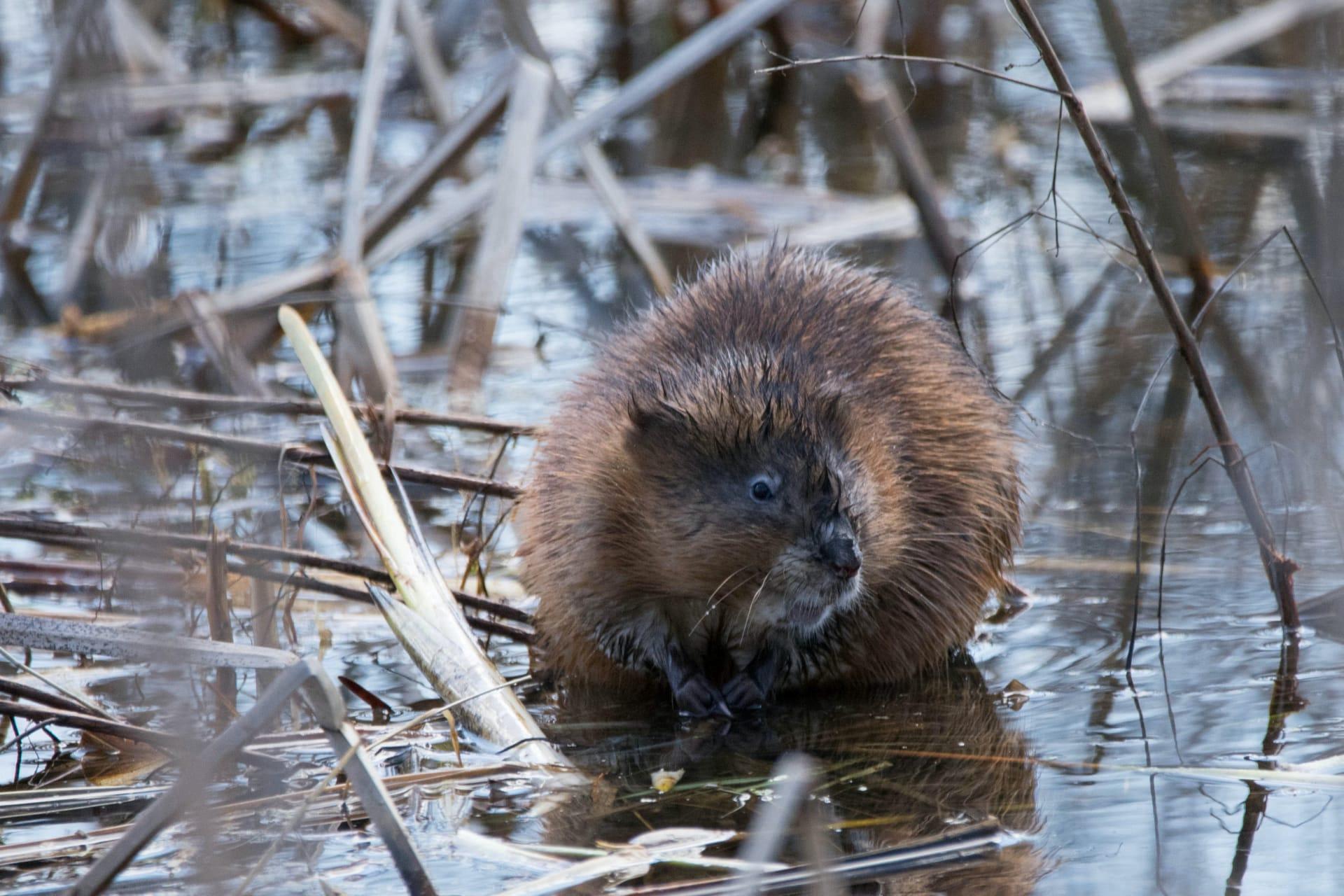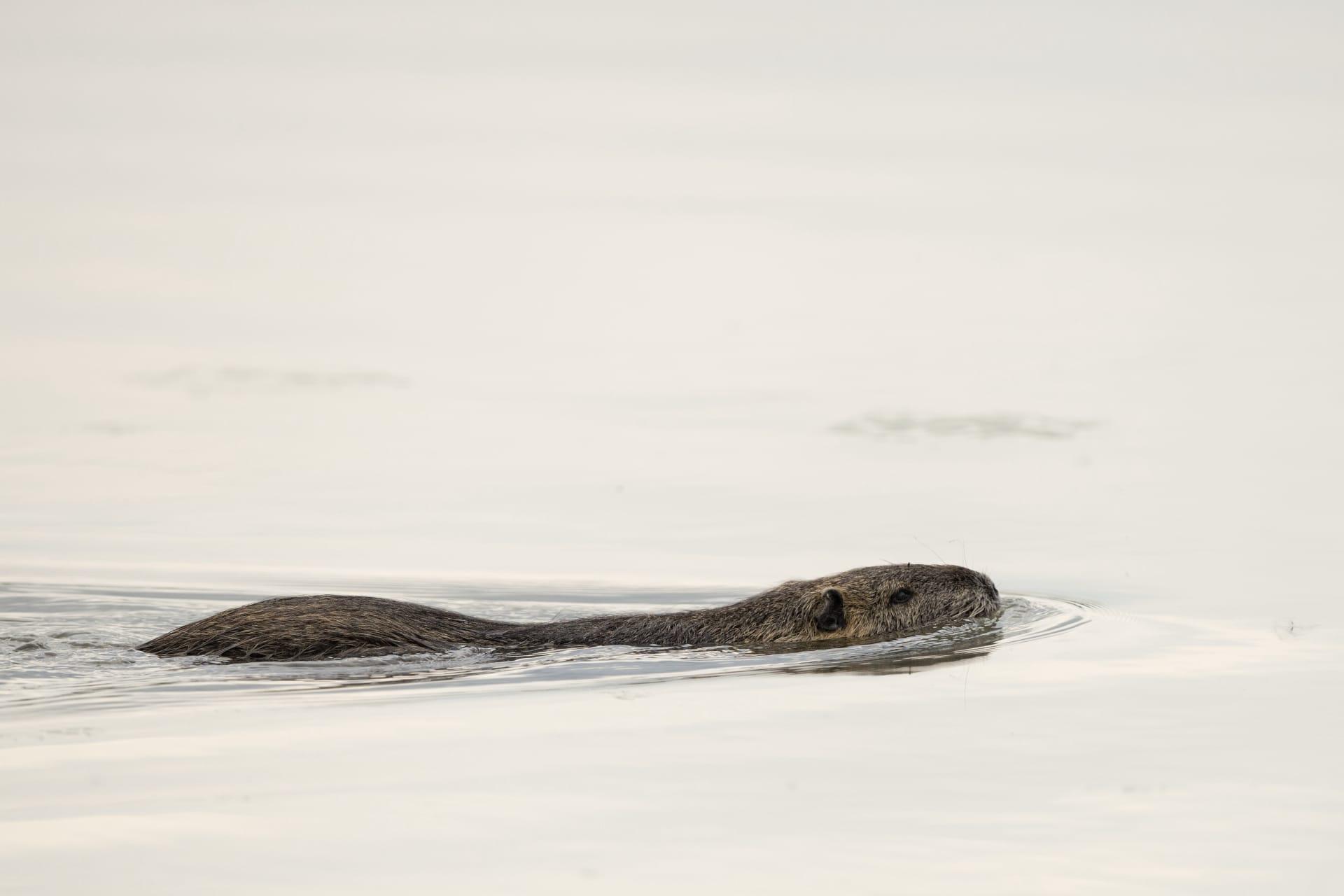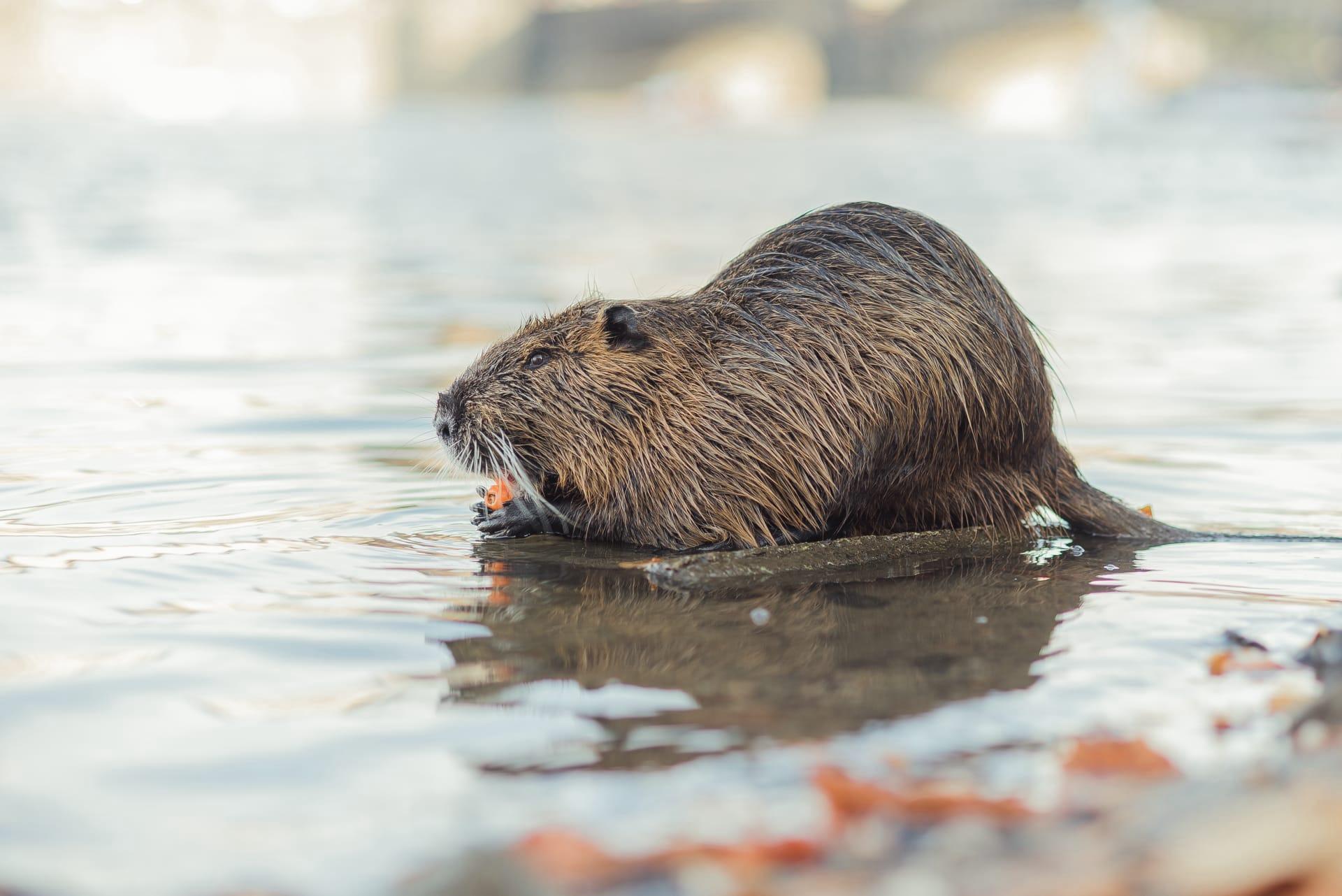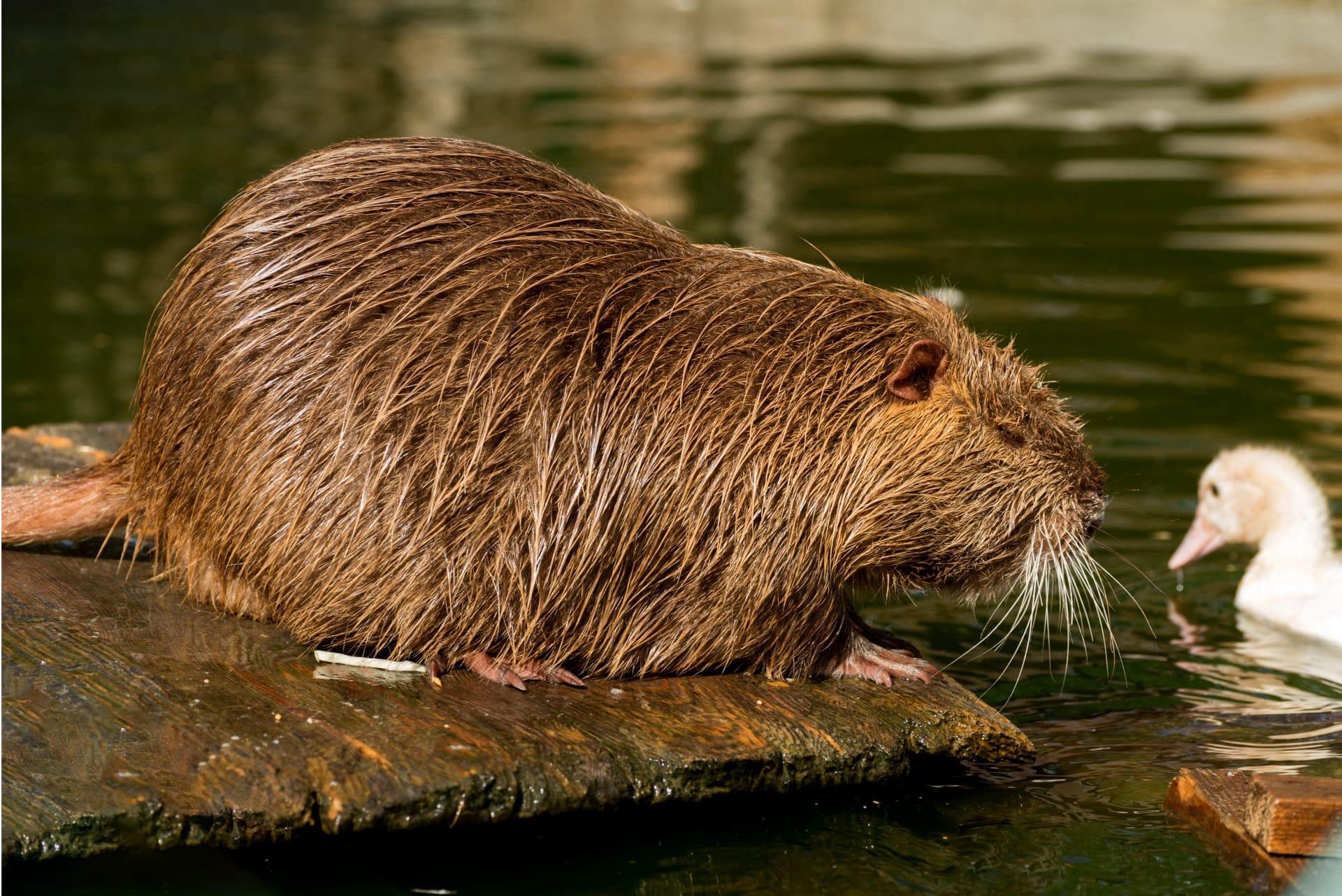1
Beavers are nature's architects, famous for their dam-building skills. A beaver's dam can be substantial, sometimes stretching up to 1,500 feet long! These dams, built from sticks, mud, and stones, are not just random piles but are carefully constructed to control water flow and create a pond-like habitat. Beavers' ability to alter their environment is so profound that they can significantly change the landscape, creating wetlands that benefit a variety of wildlife.
Another fascinating aspect of beavers is their teeth. These rodents have incredibly strong, orange-tinted incisors due to a high concentration of iron, making them exceptionally durable and resistant to acid. Unlike human teeth, beaver teeth never stop growing. This continuous growth is crucial because their primary activity - gnawing on wood - would otherwise wear their teeth down. Their teeth grow at a rate of about 4 millimeters per month, ensuring they always have the tools needed for their impressive woodworking.

2
Did you know beavers are second only to humans in their ability to manipulate and change their environment? They are master engineers, creating complex structures like dams, canals, and lodges. Beavers use their dams to raise water levels, which helps them access food and protect themselves from predators. Their canal systems, which can be quite extensive, allow for easy transportation of building materials and access to food sources during winter.
Beavers also have a unique way of keeping warm in winter. Their lodges, built with an entrance underwater, have a cozy living space above the water line. The design keeps the interior warm, often above freezing, even when outside temperatures plummet. This warmth is partly due to their thick fur, which has two layers: a coarse outer layer and a fine, dense underlayer. This fur is not only warm but also waterproof, thanks to natural oils that beavers spread over their coat, making them well-adapted to their aquatic lifestyle.

3
Communication is key in the beaver world. They use a variety of methods to interact, but one of the most notable is tail slapping. When a beaver senses danger, it dives into the water, forcefully slapping its broad, flat tail against the surface. This loud smack serves as an alarm to warn other beavers in the area. The sound can be heard over large distances underwater and above water, acting as an effective communication tool in their aquatic environment.
Beavers are also remarkable for their monogamous nature. They usually pair for life, sharing the responsibilities of building and maintaining their lodge, raising their young, and defending their territory. This strong bond is essential for their survival and success as a species. In a beaver family, both parents care for the kits, which are born fully furred and with open eyes. The kits stay with their parents for two years, learning essential skills for survival.

4
Beavers play a crucial role in biodiversity. Their dam-building activities create wetlands, which are among the most productive ecosystems on the planet. These wetlands provide habitat for a multitude of species, from fish and amphibians to birds and insects. By creating ponds and wetlands, beavers help in water purification and soil enrichment, making them key players in maintaining ecological balance.
Interestingly, beavers have a significant impact on climate change mitigation. Their ponds and wetlands act as carbon sinks, trapping and storing carbon dioxide. This process reduces the amount of CO2 in the atmosphere, helping to counteract greenhouse gas emissions. Their role in shaping ecosystems goes beyond just construction; they contribute to the health of our planet by influencing carbon cycles and supporting a diverse range of life.

5
Beavers have a unique digestive system that allows them to extract nutrients from tough plant materials. They primarily eat bark, leaves, and aquatic plants. To effectively digest cellulose, beavers have a large cecum, a part of the intestine where microbial fermentation of plant material occurs. This adaptation allows them to break down cellulose and extract necessary nutrients, making their diet sustainable and efficient.
Lastly, beavers are known for their hardworking nature. They are most active during the night, making them nocturnal animals. Their work schedule revolves around building and repairing their dams and lodges, foraging for food, and grooming. Beavers are so dedicated to their tasks that they have been observed working tirelessly, often moving significant amounts of material each night. This industrious behavior has made them a symbol of diligence and persistence in various cultures.